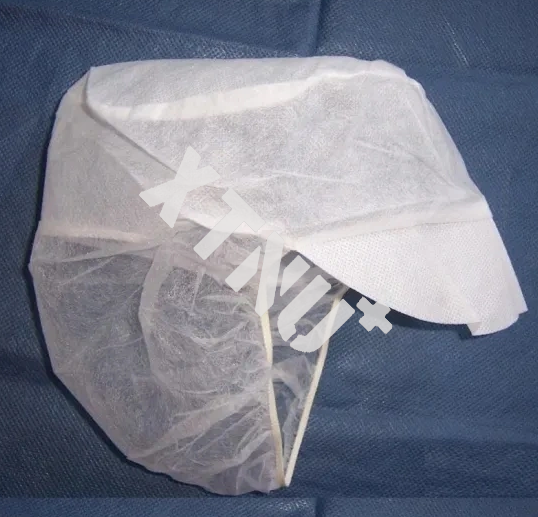spunlace nonwoven technology
The research and development of spunlaced composite technology not only overcomes the limitations of some nonwoven products, but also increases the variety of colors, greatly broadens the application fields of spunlace nonwoven fabrics, and promotes the spunlace technology and even the entire non-woven fabrics process. Development and improvement.
spunlace nonwoven technology
(1) Spunlace and wood pulp air-laid composite technology. Since the wood pulp price is much cheaper than the staple fiber commonly used for the spunlace process, the fluff pulp has good moisture absorption and feel, and therefore the manufactured product is cheaper than the all-fiber product and is competitive in price but in the process The filter system is very demanding. The product can be used as a core material for diapers (70% g/m2), diapers and sanitary napkins. The equipment for the hydroentanglement of spunlace and wood pulp is the Aquapulp from Fleissner and the Airlace from Perfojet.
spunlace nonwoven technology
(2) Spunlace and filament spunbonded web technology. The composite
product of this method combines both the strength and short fibers of
the municipality with good absorption performance of the spunbond
nonwoven fabric, and is evener and softer than the spunbonded nonwoven
fabric, and has the function of absorbing water and absorbing oil, and
has higher strength, and can be used as a food wrapper , decorative
cloths, and cleaning cloths. The equipment combining the spunlace and
spunbond method includes Aquqspun and Aquasplit from Flerssner. And
Freudenberg's Evolon processing technology. (3) Spunlace and wet-laid
composite technology. A typical process Detex's Hydraspun technology
consists of Detex wet-laid technology combined with Japan's Unicharm
company registered Soflom spunlace method. Hyderaspun wet spunlace
nonwovens have the same strength and softness as traditional dry
spunlace nonwovens, and the wet spunlaced nonwovens are free from lint,
and their seam stretch strength is dry spunlace Twice as non-woven, it
is especially suitable for the field of clothing.
Fabric finishing function new technology
spunlace nonwoven technology
In 1995, the American BBA company developed the Interspun process and
applied for a patent. Using this process, the surface of the fabric is
treated with hydroentanglement, which can have a positive influence on
the structure and properties of the fabric. In 1998, BBA signed a
cooperation agreement with Fleissner and Fleissner was the exclusive
supplier of this technology. Fleissner's Aquatex is a system that uses a
spunlace head to treat woven fabrics and is known as a revolutionary
measure for woven finishing. After the woven fabric is spun-laced, the
yarn in the fabric is loosened and the fabric is effectively cleaned.
According to the arrangement of the water-jet puncture head, the effect
of the peach skin is obtained on both sides or on one side of the
fabric; The stress generated during the process of the fabric makes the
warp yarn more uniform, thereby improving the hand and appearance of the
fabric, increasing the thickness of the fabric, making the fabric
glossy and soft, and the abrasion resistance is more than 300% before
the untreated, the slipping of the sewing place. The phenomenon is more
than doubled, the anti-pilling performance is improved, the wrinkle
resistance is improved, the fabric is more even, the pores of the fabric
are reduced, and the distribution is more uniform. It is used for the
dyeing of cotton fabrics, which is similar to mercerization. Therefore,
the process of desizing, scouring, mercerizing, sanding and the like can
be eliminated after the spunlace treatment, and the bleaching process
can also be simplified, which has obvious comprehensive economic
benefits. Products are widely used in decorative cloth, filter cloth,
home textiles, clothing, automotive airbag fabrics.
New progress in spunlace technology
spunlace nonwoven technology
A study by Memis Acar of the Department of Mechanical Engineering at the
University of Loughborough in the UK showed that the spunlace process
can process glass fibers and produce industrial fabrics. Due to the
non-crimping of glass fibers, the traditional concept is that dry
non-woven processes are difficult to process. Most glass fiber nonwovens
are generally processed by needle punching or wet processing, but NCSU
has successfully developed spunlaced nonwovens of glass fiber and
polyester blends. Diameter of 16um of coarse denier glass fiber, it is
very difficult to process with water, if mixed with fine diameter glass
fiber with a diameter of 6.5um, it is beneficial to improve the strength
of spunlace non-woven fabric, so different denier glass fiber blend,
fine denier fiber Spunlace is beneficial, and coarse denier fibers help
to improve the strength of spunlace nonwovens. If the glass fiber is
mixed with textile staple fiber such as polyester, the hydroentangling
ability can be enhanced. Blending glass fiber with low-melting polyester
can produce fiber-reinforced polyester composites. Researchers at the
University of Aubrum in the United States used NGSN equipment to find
that the spunlace process can produce homespun fabrics that are produced
by acupuncture and hot rolling processes. The researchers found that
changing the spunlace pressure and the time the web is exposed to the
water needle can change the pore size of the geotextile. The pore size
is a key indicator of geotextiles, especially when used as a sand
filter, allowing the flow of water to pass through and prevent soil
movement. Extending the time of the web to be affected by the water
needle or increasing the pressure of the spunlace can enhance the
hydroentangling effect of the web and reduce the pore size of the
fabric. The aperture size can be adjusted online without stopping,
thereby increasing the production speed and is more flexible and
convenient than other geotextiles.

-
2023-05-13
Disposable Protectiv…
Disposable Protective Nylon Be…
-
2023-05-13
Wholesale Nonwoven B…
Wholesale Nonwoven Beard Cover…
-
2023-05-13
Disposable PE pedicu…
Disposable PE pedicure liner/s…
-
2023-05-13
Disposable Blue PE p…
Disposable Blue PE pedicure li…
-
2023-05-13
XTNU Non-skid blue s…
XTNU Non-skid blue shoe cover …
